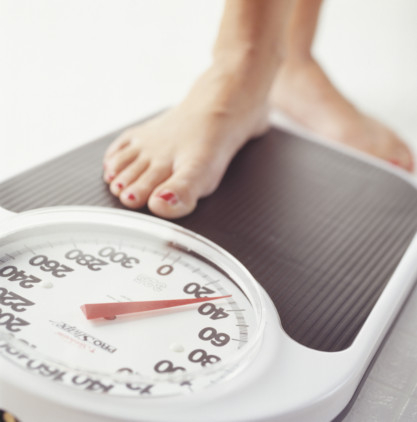
Talk about weight loss and you start mentally knocking off the fat from your body. This typical response however does not weigh in with Ayurveda. As per Ayurveda, weight loss is not about taking the fat out of the food you eat. Rather, it is about activating a sluggish metabolism by ingesting the right kind of foods, so the body takes care of the fat on its own. According to Dr Chandy, the Ayurvedic approach to fat loss is simple – an active metabolism automatically means that in the long run, the accumulation of fat in the body will be minimal.
Ayurveda attributes the metabolic capacity of an individual to the type of dosha they have. For instance, if you have a Kapha dosha, you will find it is easy to gain weight as compared to someone who has a Vata dosha. Kapha types take twice as long to lose weight as compared to Vata due to their typically sluggish metabolism. If you are a Vata body type, you are lucky as Vata types have a naturally slim body and therefore, don’t need to regulate their diet as much as a Kapha type. The most important adjustment a Vata dosha type can make is to ensure that they eat their three cooked, warm meals at the same time every day, as this will improve their digestion and help their body assimilate the nutrients better. However, when it comes to digestion, the Pita dosha types are the absolute champions as they have great digestive powers and the food they eat is completely digested leading to a physiological system that is working at an advantage.
As regards dosha and food, one must also keep the following points in mind;
Vata Dosha: Opt for food that is steamed and boiled and reduce intake of, or avoid, items that are fried, roasted or baked. You should also always warm drinks over cold ones and try to use Vata-pacifying spices like ginger, basil, cumin and fennel as often as you can.
Pitta Dosha: A Pitta persons diet is sweet, cool and juicy which will keep the Pitta dosha in balance. His or her diet should also be high in fresh plant foods and low in meat and seafood.
Kapha Dosha: Unlike others, Kapha body types need to breakfast lightly especially if they need to lose weight. The most important meal for a Kapha body type is the mid-day meal or lunch.
Digestive Fire (AGNI)
Our digestive fire has a huge impact on how we metabolise food and gain or lose weight. Dr Chandy notes, “Even the slightest imbalance in your Pitta dosha disturbs your naturally strong and efficient digestion.” A strong digestive fire results in proper and complete digestion which leads to the complete absorption of the food and its nutrients. When the concentration of the digestive juices is reduced (this usually occurs when you drink water before, during or immediately after a meal), the metabolism becomes sluggish. This, in turn, leads to digestion and absorption being affected and eventually leads to weight gain. “Water should be had 20 minutes before or after having one’s meal to allow the digestive fires to work well,” says Dr Chandy.
Digestive fire’s strength is also affected by the quantity of food ingested at a time. The amount of food being eaten should be in proportion to the strength of one’s agni. A person with weaker agni will have no choice but to be stricter about their portion size and control.
Role Of Meal Time
In the modern world weight loss is one of the biggest issues that hound men and women alike. Most of us are counting calories and measuring each and every step we take, however most of us don’t pay attention to the most basic of steps that we must follow in order to lose weight – meal time. Dr Chandy says, “In order to lose weight in a healthy manner, it is important to eat meals at regular intervals and tailor your diet based on your lifestyle and body constitution.”
1. Don’t skip any meal. All three meals (breakfast, lunch and dinner) are vital.
2. Have the next meal only after completely digesting the pervious meal.
3. Eat dinner early – ideally before 7pm.
4. Include carbohydrates in your breakfast as this will provide you with energy for the day.
5. Lunch should be an amalgam of all the items in the food pyramid.
6. Make sure that proteins are kept to a minimum at dinner time.
Weekly meal chart
Eating healthy and trying to lose weight doesn’t mean you have to eat bowl after bowls of greens. The chart below is a rough guide to a proper weekly weight loss plan, keeping in mind your dosha. Depending on it, add or substitute foods to suit your constitution.
DAY 1
BREAKFAST: 3 slices of whole meal bread with honey.
LUNCH:1 big bowl of vegetable salad only.
DINNER: 2 Arabic breads with vegetable dish.
DAY 2
Breakfast: 1-½ small bowl cornflakes with milk and honey.
Lunch: 1 small bowl rice with a vegetable dish.
Dinner: 1 big bowl of homemade vegetable soup.
DAY 3
Breakfast: 2 bananas and ½ cup yogurt.
Lunch: 2 Arabic breads with vegetable dish.
Dinner: 1 big bowl of cooked vegetable salad only.
DAY 4
Breakfast: 1 Boiled Egg and 4 digestive biscuits.
Lunch: 1 small bowl rice with a vegetable dish.
Dinner: 2 Arabic breads with vegetable dish.
DAY 5
Breakfast: 3 slices of whole meal bread with honey.
Lunch: 1 small bowl of pasta with lots of vegetables.
Dinner: 1 big bowl of corn soup.
DAY 6
Breakfast: Fruit diet day – 4 pieces of papaya.
Dinner: Fruit diet day – 2 apples with 100 gms of blueberries.
Dinner: 3 big pieces of watermelon.
DAY 7
Breakfast: 1 boiled egg with a full glass of warm water.
Lunch: 150 gms of steak with 2 toasted slices bread.
Dinner: 1 bowl of pasta with lots of vegetables.
(Binu Sivan is a Dubai-based freelance writer).











